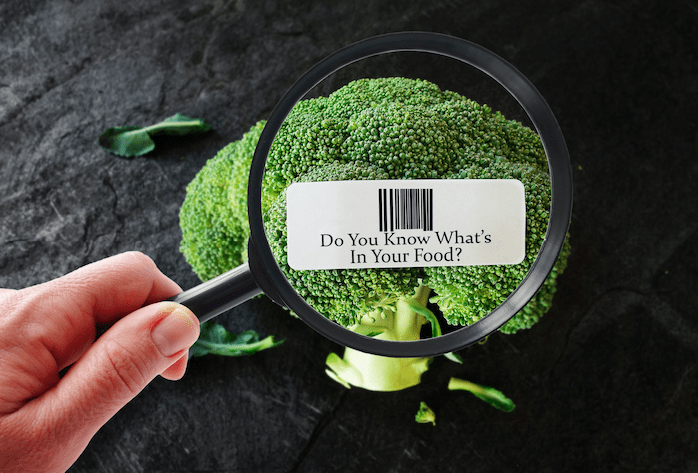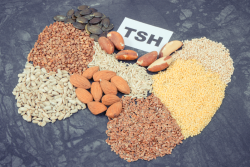Before the 1940s all foods could have been considered “organic,” but since the 1950s the amount of pesticides used agriculturally has more than tripled. These pesticides are found in our fruits, vegetables, meats, dairy and fish.
There are two main categories of pesticides:
- Persistent organic pollutants (POPs) (polychlorinated biphenyls (PCBs), organochlorine pesticides (OCPs), and brominated flame retardants); found in fish, meat and dairy
- Non-persistent organic pollutants (NPOPs) (pesticides and herbicides, plasticizers and BPAs); found in fruits and vegetables, canned foods, anything wrapped in plastics, styrofoam, or canned foods.
Higher consumption of these pesticides will impact female and male fertility.
Female Fertility and Food Pollutants
POP consumption and exposure have been associated with:
- Endometriosis
- Increased miscarriage rates
- Infertility
- Early exposure prior to menarche has been associated with early menopause, PCOS and uterine fibroids
- Decreased fertilization rates in an IVF setting
Non POP consumption and exposure like BPAs and Organophosphates have been associated with
- Infertility
- Higher spontaneous abortions (for example: exposure in female agricultural workers)
- PCOS and elevated serum androgens in adolescent girls
- Reduced implantation in an IVF setting.
Male Fertility and Food Pollutants
Consumption and exposure to food pollutants in utero or in life has been shown to impact male fertility as well.
POPs
- Higher intake or exposure to PCBs (ex. from fish consumption or fish farmers) have higher rates of infertility.
- Increased risk of obesity
Non POPs
- Phthalates (plasticizers) have been associated with higher levels of DNA damage in sperm.
- Agricultural farmers have been shown to have decreased sperm concentration and sperm motility.
- Exposure and intake can be related to decreased testosterone production. Decreased testosterone levels will have other impacts like decreased libido, ED, decreased muscle mass, low energy, etc.
What do we do?
These food pollutants exist in our food chain in the form of whole or processed foods and will cause hormone disruption and affect egg and sperm quality. Therefore optimizing your fertility involves “cleaning up” your food pollution.
Start with cleaning up fruits and vegetables. For example, the Environmental Working Group (EWG) has compiled a list of commonly consumed foods that have the highest pesticide residue concentration, your Dirty Dozen; and a list of the lowest pesticide residue concentrated foods, your Clean Fifteen.
| EWG Dirty Dozen | Clean Fifteen |
| Strawberries
Spinach Nectarines Apples Peaches Cherries Grapes Celery Tomatoes Sweet bell peppers Celery Potatoes
|
Avocados
Sweet corn Pineapple Onions Papaya Sweet peas frozen Eggplant Asparagus Cauliflower Cantaloupe Broccoli Mushrooms Cabbage Honeydew melon Kiwi |
With your Dirty Dozen and Clean Fifteen list I recommend doing one of three things:
- Wash your fruits and veggies in an acid or alkaline solution.
- Acid solutions are readily available on the market. They are typically sold as “Fruit and Veggie washes” that are organic and eco friendly. They will have a main ingredient that is an acid (ex. lactic acid, vinegar).
- Alkaline solutions can be made at home. Simply place 1 tsp of baking soda in 2 cups of water and soak your produce for 15 min.
- Peel your fruits or veggies. This isn’t always possible (how do you peel spinach?), so if you can’t peel I recommend soaking in a fruit and veggie wash.
- Switching your Dirty Dozen fruits and veggies list to all organic produce. Organic foods have been shown to be less contaminated than commercially grown non-organic food.
When you start to look at your overall environmental toxin exposure, it can be overwhelming. Start simple and slowly clean up your food pollutants in small ways. For more strategies regarding environmental medicine and fertility contact us at Conceive Health.
References:
- Crinnion, W., Pizzorno, JE. Clinical Environmental Medicine. 2019. Elsevier Inc
- Environmental Working Group. Dirty Dozen. Retrieved from: https://www.ewg.org/foodnews/dirty-dozen.php
- Environmental Working Group. Clean Fifteen. Retrieved from: https://www.ewg.org/foodnews/clean-fifteen.php
- Tilman, D., Cassman, KG., Matson, PA., et al. Agriculatural sustainability and intesntive production practices. Nature 2002, 418(6898), 671-677.
- Yang, T., Doherty, Je., Zhao, B., et al. Effectiveness of commercial and homemade washing agents in removing pesticide residues on and in apples. J Agric Food Chem 2017, 65, 44, 9744-9752.
- Zhang, ZY., Liu, XJ., Hong, XY. Effects of home preparation on pesticide residues in cabbage. Food Control 2007, 1484-1487.



